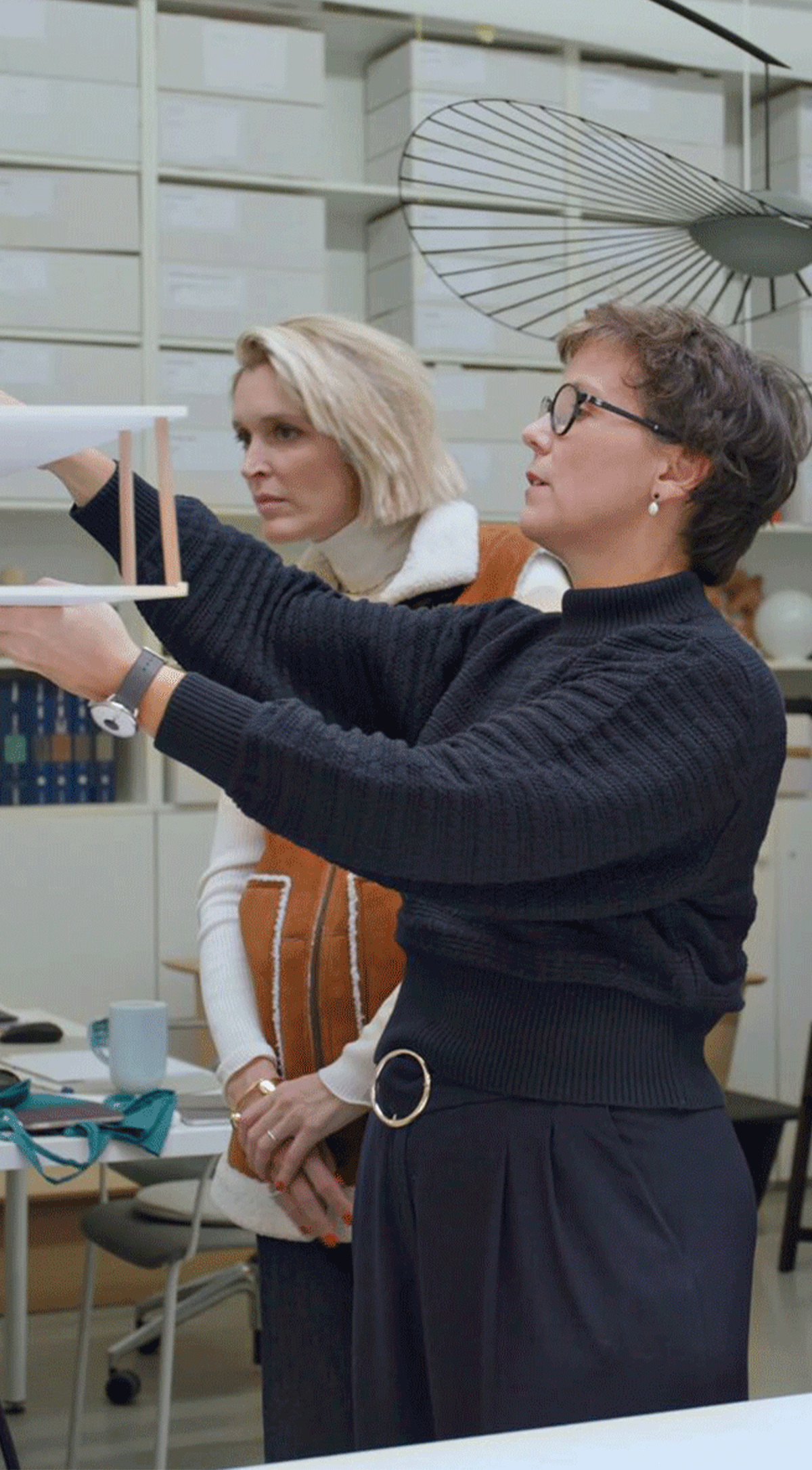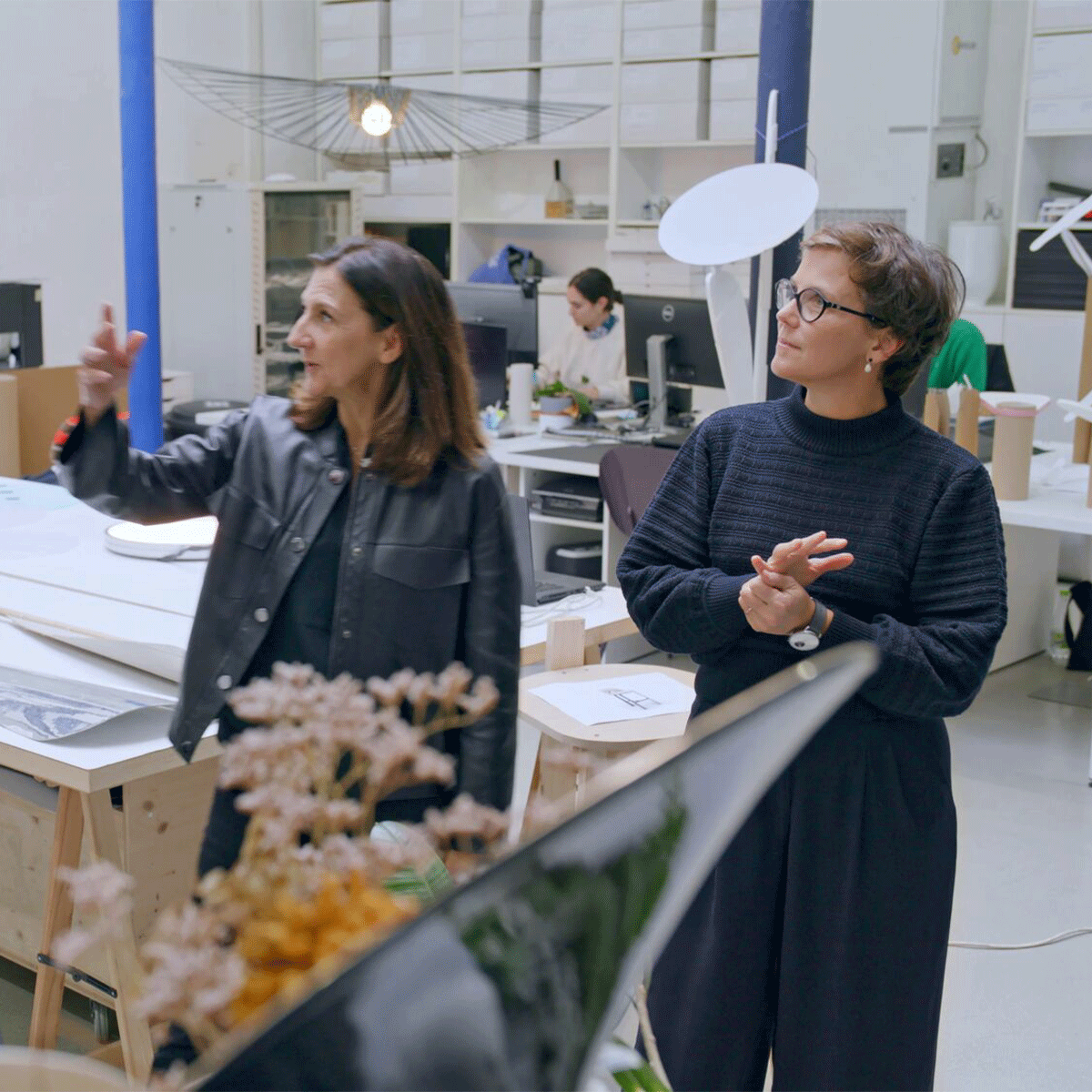
After studying economics and business at ESSEC, Constance Guisset attended Sciences Po Paris, spent a year at the Tokyo Parliament and finally chose to pursue a career in design. She graduated from the Ecole Supérieure de Design Industriel (ESDI) in Paris and set up her studio in 2009.She quickly received various public awards such as the Grand Prix du Design Paris in 2008, the Public Prize at the Design Parade in Villa Noailles in 2009, the title of Designer of the Year at the Salon Maison et Objets, the Audi Talents Awards in 2010, the Public Prize at the Salon du Meuble de Paris in 2011, the Wallpaper* Design Award in 2012 and the Grand Prix de la Création de la Ville de Paris in 2015. Her work has been exhibited in museums and galleries around the world, including the Centre Pompidou in Paris, the Musée des Arts Décoratifs in Montreal and the Museum of Arts and Design in New York.She has since worked with many prestigious brands, such as Louis Vuitton, Hermès, Cartier and Chanel, as well as cultural institutions such as the Musée des Arts Décoratifs in Paris and the Musée du Quai Branly.
Constance Guisset has won numerous awards for her work, including the Public Prize at the Salon du Meuble de Paris in 2011, the Wallpaper Design Award in 2012 and the Grand Prix de la Création de la Ville de Paris in 2015. Her work has been exhibited in museums and galleries around the world, including the Centre Pompidou in Paris, the Musée des Arts Décoratifs in Montreal and the Museum of Arts and Design in New York.
She is known for her work in object, furniture, theatre and set design, artistic direction and the creation of art installations. Her work is built around a reflection on visual illusion and surprise. She creates moving objects that are designed to provoke enduring amazement or fleeting fascination.
My research can be used in numerous different fields, such as set design, object design and videos. I try to create lightweight, animated objects, whose elegant fluidity provokes amazement and provides the opportunity to escape through dreaming.
Her different fields of research have led her to work with Petite Friture, Fontana Arte, Molteni, her time spent doing product design has given her the opportunity to work with Angelin Preljocaj and Established & Sons, she has worked on set designs with Les Galeries Lafayette, and she has completed video projects with the Musée des Arts Décoratifs and the Biennale du Design de Saint-Étienne. She lives and works in Paris.
Modifying an object in a transformatory way is a process in which a mere project evolves into something realistic which preserves only the essence, the weightlessness and the poetry of the initial idea. Once this process is complete, the project emerges from its chrysalis and becomes a finished object, intended for the exclusive use of the user, and stands on its own two feet
What is artistic upcycling?
Also known as “ecological art”, it's an artistic practice that involves transforming reclaimed materials or objects into new artistic creations. Unlike recycling, which involves reducing materials into basic elements to create new products, upcycling involves transforming materials into objects with aesthetic and functional values.
Upcycling artists use a wide variety of reclaimed materials, such as plastic bottles, packaging, newspapers, tyres, pallets, clothing and many more. They seek to give these materials a second life by transforming them into new objects and giving them a new purpose.
Artistic upcycling is often associated with environmental awareness and sustainability. By using recycled materials, artists reduce waste and help preserve natural resources. They also seek to raise awareness of the importance of reusing materials and to encourage creativity in such a way. An increasingly popular art form in recent years, with artists from all over the world creating unique and intriguing pieces of art from reclaimed materials. Examples include sculptures, installations, paintings, jewellery and many more.
MetamorFoses or the art of enhancing imperfections
Where does the term “MetamorFoses” come from? Two friends (Valérie Accary and Sandrine Couroyer) passionate about art and crafts and aware that it is no longer acceptable to throw away and waste so much, decided to give new life to precious materials. Do fabrics, silks, lace, flawed marble or alabaster scraps have to be thrown away? Arising from the concern of their designers, these materials, full of history and humanity, are entitled to a second life. Convinced that richness comes from diversity, they entrust these materials to talented and renowned artists from the four corners of the world, whose mission is to enhance imperfections and thus create unique decorative objects full of stories and emotions.
And so, Les MetamorFoses was born, the first collection of artwork made using imperfect materials that are often centuries old, and designed by the most talented French manufacturers, most of whom work for Living Heritage Companies (EPV). The artists, together with the craftsmen, will create 50 pieces every year and in turn give artistic upcycling the credibility associated with these prestigious letters. Beyond an environmental message on the rejection of the disposal of materials, this initiative also aims to convey a human message on the acceptance and enhancement of imperfections, which always generates uniqueness and emotion.

Because we don’t want to adhere to one single vision, but rather embrace diversity and encounters as our raison d’être, we wish to work on unique collections that are the fruit of singular encounters between man and material, because abundance can never be boring.
The Longchamp MetamorFoses Prize
Through the artistic upcycling project Les MetamorFoses, Longchamp has identified a mission and values that it holds dear. Born out of an authentic and energetic approach, Les MetamorFoses focuses on sustainability, artisanal excellence, creative curiosity and artistic savoir-faire in an initiative that is both genuine and optimistic. Creating objects that are well-designed and authentic, and which protect the environment and value imperfections. In short, objects that are in keeping with the times.
Longchamp has always been committed to fair, responsible and sustainable production, and supports Les MetamorFoses’ collective and daring initiative through charitable sponsorship. Once again contributing to the promotion of French arts and crafts. The profits made by Les MetamorFoses in 2022 were donated in full to Amis d'Arthur, an association working for the improvement of the quality of care and life of adults with autism.
The Longchamp MetamorFoses Prize was presented by Sophie Delafontaine, Artistic Director of Longchamp, who chaired the Jury composed of Sheila Hicks, Artist, René-Jacques Mayer, Director of the Ecole de Camondo and Axelle Givaudan, Secretary General of Artcurial. The prize was awarded to the talented duo Constance Guisset, a renowned designer, and Paul Macheret, head of the Macheret art foundry, who came together for the occasion and designed the sculpture entitled “Alba”, created from scraps of alabaster and abandoned brass tubes. This work of art, both lightweight because of its play of balances and impressive because of its beauty and purity, is a perfect example of the collaboration between the artist and the craftsman, the former's creation being based on the latter's savoir-faire.
Beyond trends and fashions, art is, more than anything, an eternal new beginning. With Longchamp, you are welcomed into the art of time!